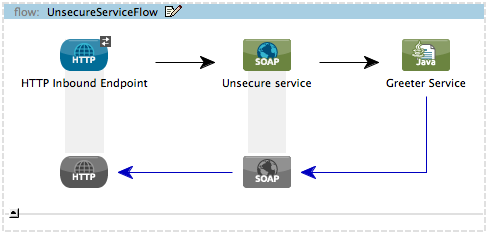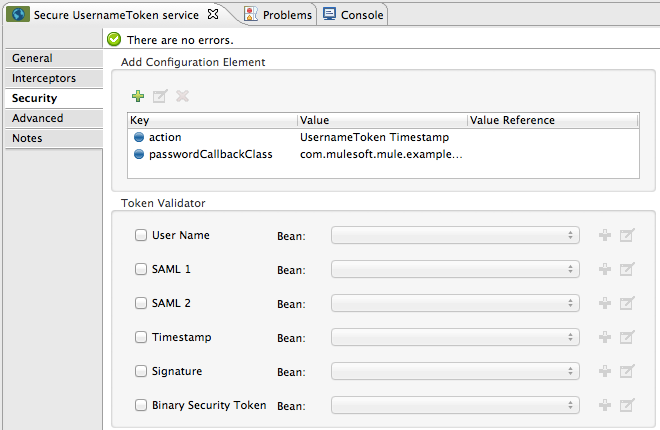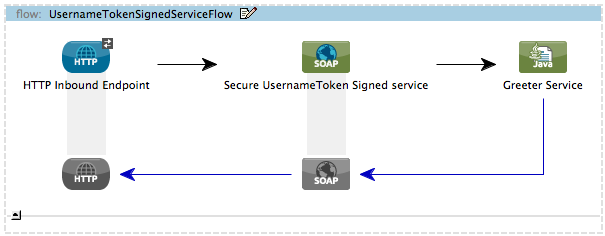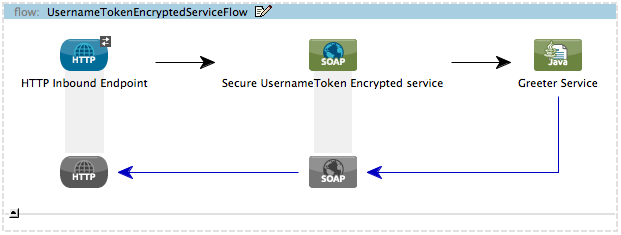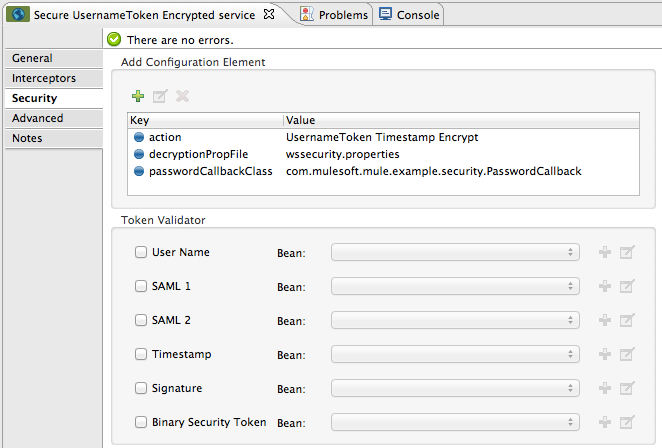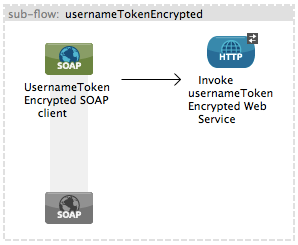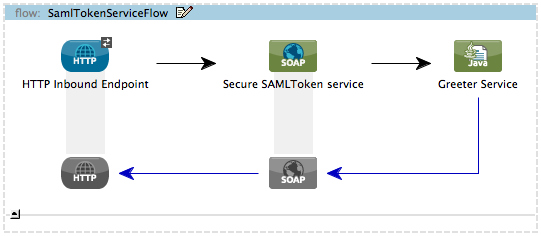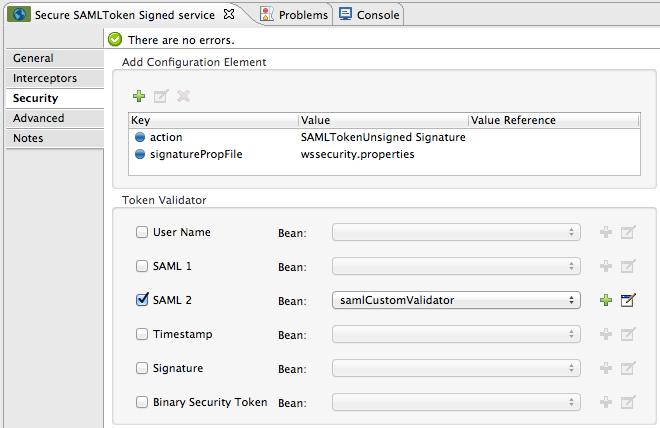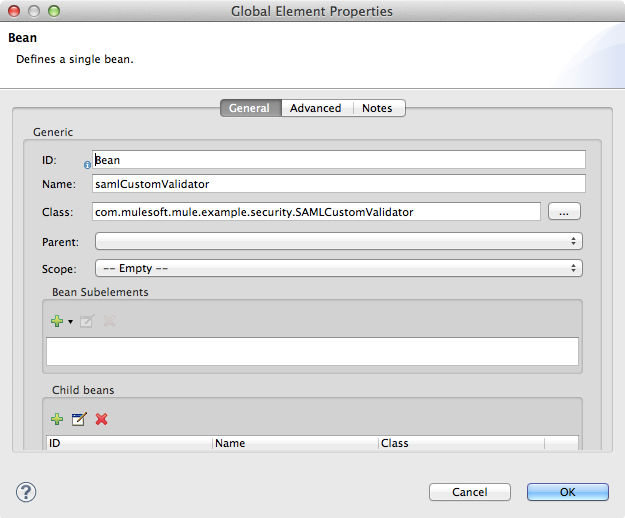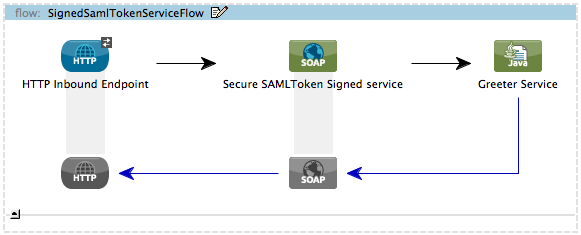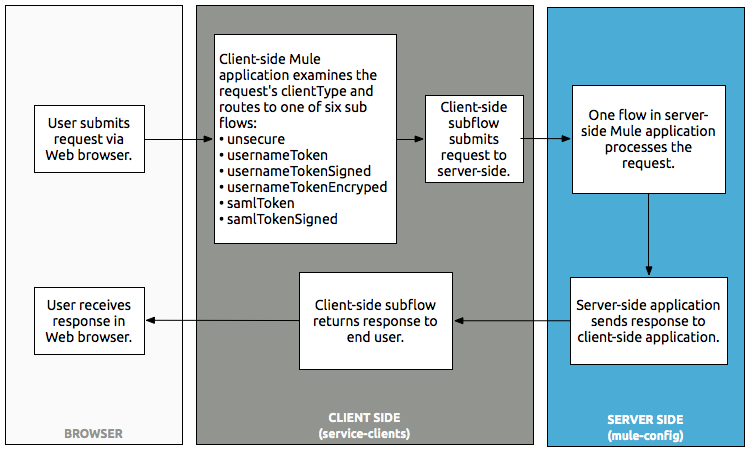public class SAMLCustomValidator extends SamlAssertionValidator
{
@Override
public Credential validate(Credential credential, RequestData data) throws WSSecurityException
{
Credential returnedCredential = super.validate(credential, data);
//
// Do some custom validation on the assertion
//
AssertionWrapper assertion = credential.getAssertion();
if (!"self".equals(assertion.getIssuerString()))
{
throw new WSSecurityException(WSSecurityException.FAILURE, "invalidSAMLsecurity");
}
if (assertion.getSaml2() == null)
{
throw new WSSecurityException(WSSecurityException.FAILURE, "invalidSAMLsecurity");
}
String confirmationMethod = assertion.getConfirmationMethods().get(0);
if (confirmationMethod == null)
{
throw new WSSecurityException(WSSecurityException.FAILURE, "invalidSAMLsecurity");
}
if (!OpenSAMLUtil.isMethodSenderVouches(confirmationMethod))
{
throw new WSSecurityException(WSSecurityException.FAILURE, "invalidSAMLsecurity");
}
if(!"AllowGreetingServices".equals(assertion.getSaml2().getSubject().getNameID().getValue()))
{
throw new WSSecurityException(WSSecurityException.FAILURE, "invalidSAMLsecurity");
}
return returnedCredential;
}
}
